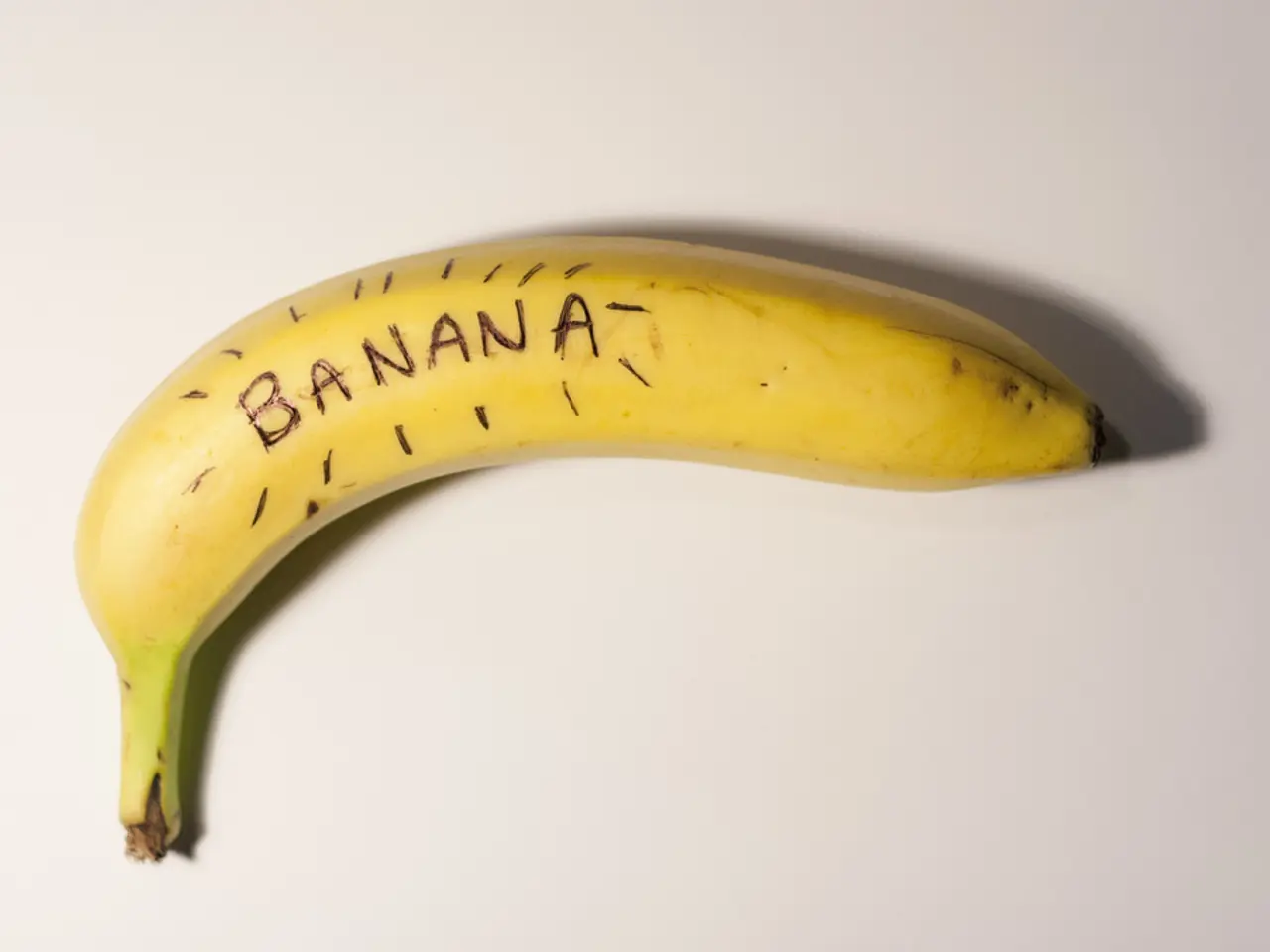Revealing Banana's Hydration Breakdown: Quantifying the Actual Water Content in a Banana
Bananas, a staple fruit in many diets, are known for their sweet taste and versatile uses. But did you know that the size of a banana directly influences its overall water content? And that proper storage conditions can significantly impact its moisture levels?
Bananas, on average, consist of approximately 75% water. However, this percentage varies depending on factors such as the environment in which they are grown, their ripeness, and the variety. For instance, bananas grown in areas with ample rainfall and consistent irrigation have a higher water content compared to those grown in drier regions.
As bananas ripen, their water content increases, with a ripe banana containing roughly between 74% and 80% water. On the other hand, unripe bananas contain slightly less, around 70% to 75% water. This increase in water content is due to the conversion of starch into sugars and the breakdown of cell walls, softening the texture but also making them more prone to spoilage due to higher moisture levels.
Interestingly, bananas hold less water than many other common fruits. For example, apples, oranges, and watermelons generally have water contents above 84% and up to 95%.
Bananas offer more than just hydration. They are a good source of vitamins, minerals, and fibers. For instance, they contain prebiotic fibers that nourish beneficial bacteria in the gut. They also provide a quick and sustained energy boost due to their natural sugars and complex carbohydrates. Bananas are a valuable addition to a balanced diet, particularly after exercise, offering a unique combination of hydration, electrolytes (especially potassium), and carbohydrates.
However, it's important to consider that relying solely on bananas for hydration could lead to imbalances. It's always best to consume a variety of hydrating foods and beverages.
To maximize the hydrating benefits of a banana, consume it alongside water or other hydrating beverages. The water in bananas acts as a solvent, facilitating the absorption and utilization of nutrients like vitamin C.
In conclusion, while bananas are about 75% water on average, they have less water content than many other common fruits. However, they offer a unique combination of hydration, nutrients, and energy, making them a valuable addition to a balanced diet.
[1] Source: USDA National Nutrient Database for Standard Reference, Release 28 [2] Source: FoodData Central, United States Department of Agriculture (USDA)
Science shows that bananas, a staple in health-and-wellness and lifestyle diets, offer more than just hydration. Rich in nutrients like vitamins, minerals, and fibers, they also contain prebiotic fibers that improve gut health. Furthermore, their natural sugars and complex carbohydrates provide a quick and sustained energy boost, making bananas a valuable addition to a balanced food-and-drink routine, especially post-exercise.




